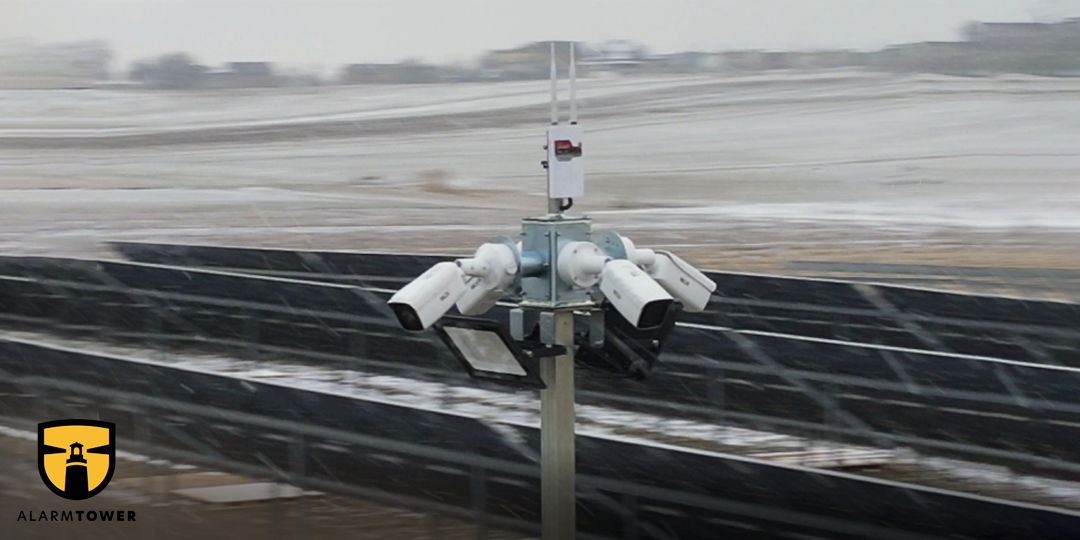PV panel performance prediction
Powering mobile towers is a very challenging issue when there is no constant source of electricity on site. Powering the surveillance with PV (photovoltaic) panels enables the towers to work most of the time with no connection to the grid, however, providing them with sufficient power is often not a simple task.

AlarmTower – simplified annual PV production potential
The graph shown above implies that, under perfect conditions, PV panel monitoring power works really well from March to September. Such graphs present the distribution of sunshine duration on a monthly basis – not taking into account rare and variable-weather events, which occur more frequently in winter. It is not the values that should be looked at here, but rather the ratio of the declines to the peak of the opportunity. Unfortunately, it is also a very optimistic case for a decrease in the efficiency of PV panels.
PV panel monitoring supply – historical data analysis
The actual results of the energy output obtained from the large set of PV panels analysed at AlarmTower through 2021 are shown below. An installation that is professional but not absolutely ideal, with imperfect angles and spaces undiscovered to the horizon like a Lucky Luke cartoon. The subjectively estimated favourability of the setting and location for Poland is 90%. As you can see, the real data slightly deviates from the ‘benchmark’ data in terms of the proportion of individual months in relation to the peak.
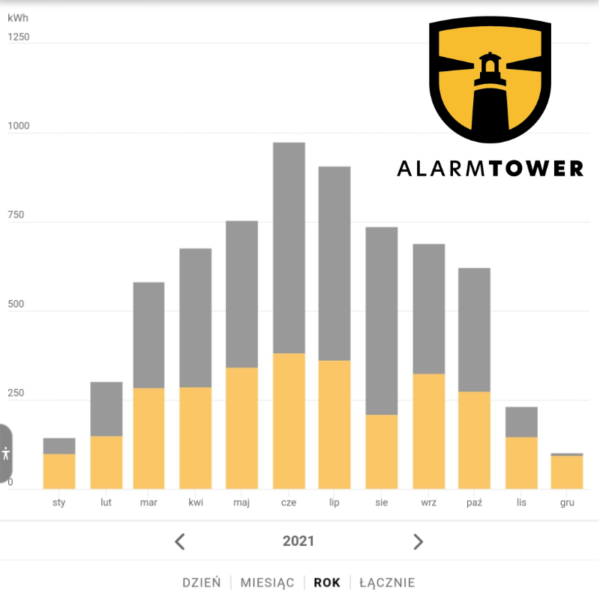
AlarmTower – PV experimental results months of 2021
For energy generation for day-to-day use, supplemented by power plant supplies for saving, and for generation for sale, the above chart can be used – and that is enough. But if we are to provide power continuity without an external power source, we need to delve into the details to the level of a bufferable period, which is roughly one day, or possibly two days in our case.
Here we will look at the individual months out of sequence, considering a variety of cases.
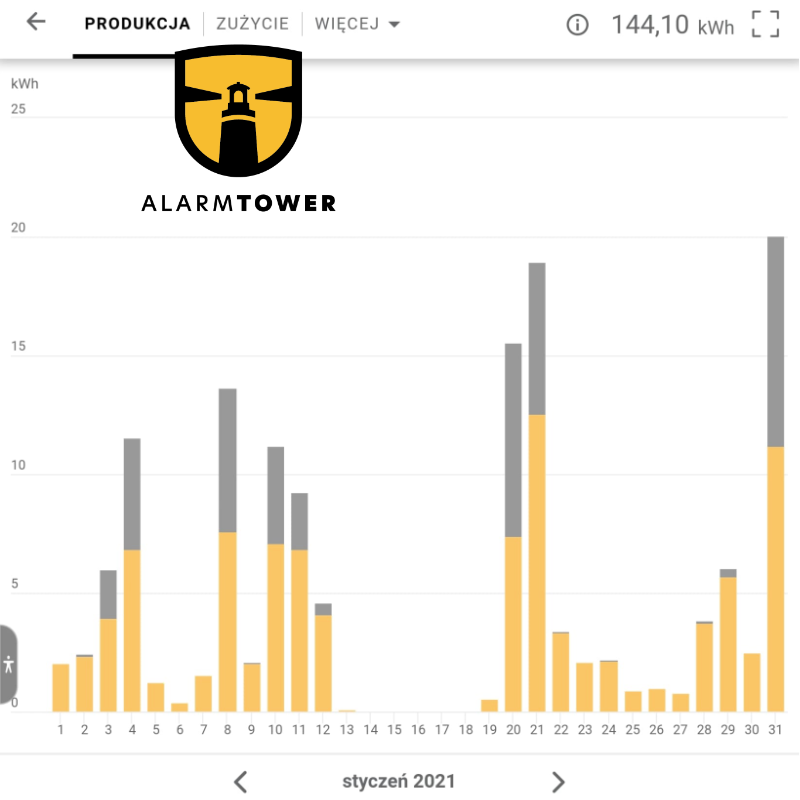
AlarmTower – PV experimental results from January 2021
A power outage from 13 to 19 January would also cause an interruption in service. But not only that. The very days of 1, 2, 3, 5, 6 and 22 -30 January are ‘not good enough’ days to maintain operation. And energy production during these days is about 5% of the nominal capacity of the panels.

AlarmTower – PV experimental results from December 2021
Poorest period for monitoring power supply with PV panels
December is definitely the worst month to produce energy from panels. There were basically only a few days in December 2021 that would enable the system to run smoothly. When the efficiency of the installation drops below 10%, it would be necessary to substantially enlarge the PV supply to ensure optimum efficiency. And surviving a longer drop of 5% is much more challenging.
With the data obtained, we will carry out a very loose analysis, calculating the figures we know in round ones. If the system draws 40 W, it consumes around 1 kWh a day. Based on our findings, a 370-400 W panel is capable of generating 3 kWh at peak. If the efficiency goes down to 5%, the panel provides approximately 0.15 kWh. A 40 W device would thus need to be supplied with around 7 panels to work. Another 7 -10 to charge the buffer tanks (batteries) at the same time. This kind of procedure will not make our installation more resistant to the above-mentioned several days of interruption anyway, but at most 3 days.
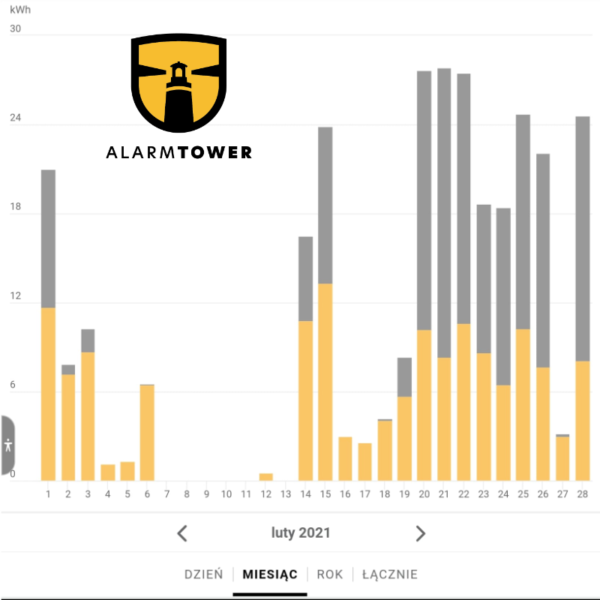
AlarmTower – experimental results from February 2021
Although February shows some improvements, one can expect trouble from 4 to 14 February and 16 to 19 February. Failure is highly likely and, consequently, power interruption. It will be necessary to change the batteries every two days or secure an additional power supply, such as a fuel-efficient generator.
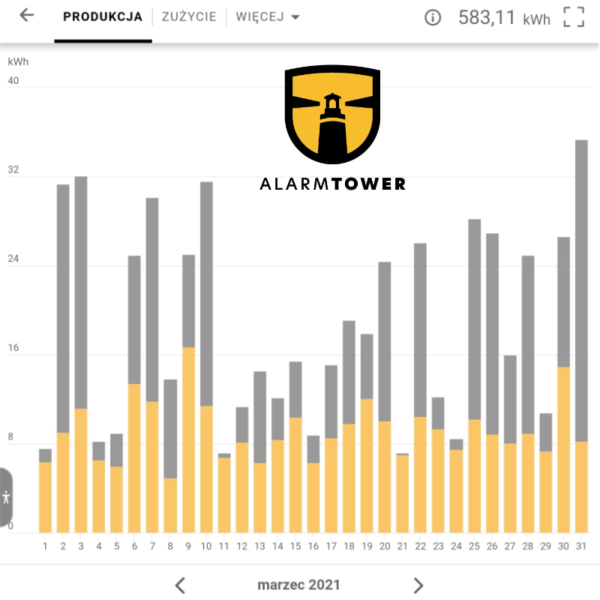
AlarmTower – PV experimental results from March 2021
Summary of the analysis
To recap, the chart below illustrates the energy demand of the installation and the energy production run of the two large 400 W PV panels. As you can see, this solution works in summer, but not so much in winter. We regret to alert you that prolonged power outages can also appear in the summer, but they are more occasional at this time of year.

Another concern is that we may not be sure if some digger or crane on a construction site operated by a tower is obstructing our panels for most of the day. Naturally, there are also some days in summertime when actual electricity production decreases below 10 per cent. If there are more days like these, the system will fail without any additional power supply.
Alternative solution for supplying monitoring with PV panels
AlarmTower solution is a combination of several environmentally friendly power-generating systems. If photovoltaics do not work for some reason, a fuel cell helps.
We remotely monitor the capacity of the fluid required for power generation and we are able to react at the relevant stage so that these interruptions in the system’s operation do not occur at all. The sources we use do not leave a carbon footprint. The device works as far as possible using energy extracted from the panels and, in the event of a shortage, energy from a fuel cell.
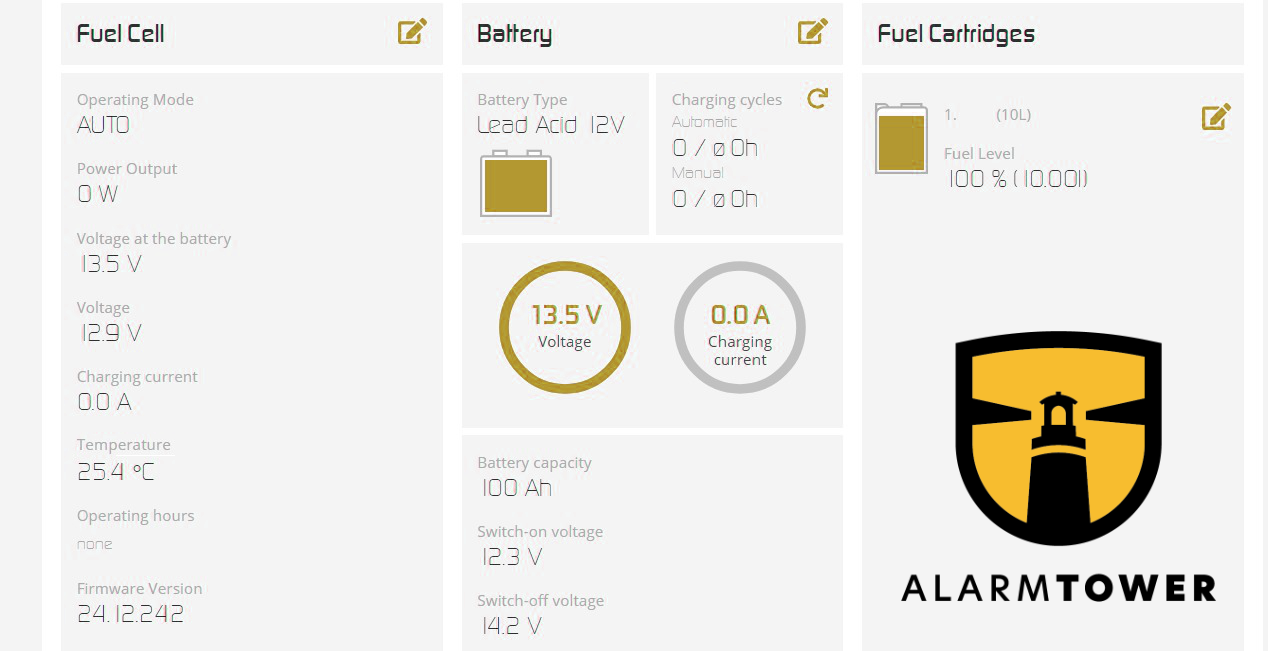
Energy level monitoring and supplementary power supply
Applying an additional ’emergency’ power supply is a more expensive but reliable solution. Fuel usage is minimised – it is limited only to the time of PV deficit. AlarmTower can monitor, refuel and guarantee a flat-rate fixed cost of running the unit.
The combination of the abovementioned technologies offers the most reliable solution on the market. In terms of reliability and foreseeability, it is hard to even compare them with security based on personal staff. For more on this topic, see article: Security and problems with watchmen.

